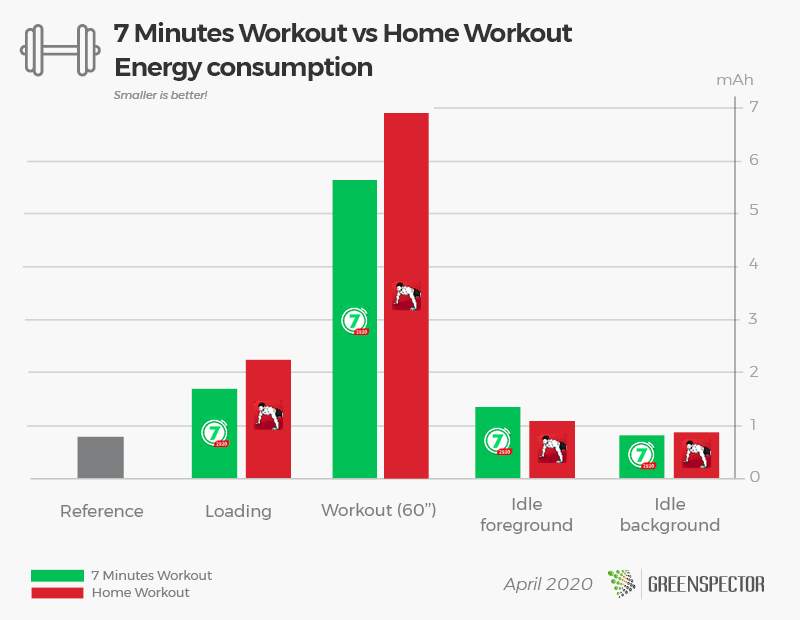For this special “stay at home” battle, two applications offering full-body workout will oppose: 7 Minutes Workout vs Home Workout.

In the left corner 7 Minutes Workout, the application, which has more than 3,000,000 users, offers sports training lasting 7 minutes based on the HICT (high intensity training circuit).
In the right corner Home Workout, app part of the Leap Fitness Group which offers daily exercise routines for all major muscle groups.
The weighting
At weighing Home Workout is the most caloric application with a weight of 43 MB. The 7 Minutes Workout application is 14% lighter with a weight of 37 MB.
The fight

The athletes are getting ready to compete on a full-app challenge program!
The first part of the program naturally consists of observing the launch phase (or warm-up) of the application. 7 Minutes Workout (1,71 mAh) wins the first round by consuming 24% less than its opponent Home Workout (2,25 mAh). During the second round which corresponds to the scenario of the user journey (carrying out a beginner sports program), it is always 7 Minutes Workout (5,61 mAh) which leads to Home Workout (6,92 mAh) with lower consumption by 19%. To put an end to this confrontation, we have set up two decisive rounds to observe the rest phases of each opponent. While we are at the stretching stage, Home Workout takes over on 7 Minutes Workout by consuming 18% less in the inactivity stage in the foreground. The applications are neck and neck for the inactive phase in the background, however 7 Minutes Workout takes over by consuming 6% less than its opponent!
The bell rings! End of training!
The winner

Without any surprie, the 7 Minutes Workout app won this match with an overall score of 9,48 mAh to 11,19 mAh, or 15% less battery consumption compared to its opponent Home Workout. Note that 7 Minutes Workout is also less consumer in terms of data exchanged, 16 KB against 2,8 MB for Home Workout.
If we project the journey for one minute in carbon impact, the 7 Minutes Workout application consumes 0,10 gEqCO2 or the equivalent of 0.88 meters performed in a light vehicle against 0,39 gEqCO2 for Home Workout or the equivalent of 3.51 meters.
For those who like numbers
| Application | Version | Downloads | Playstore Grade | Application weight (MB) | Exchanged data scenario (KB) | Memory consumption scenario (MB) | Energy consumption (mAh) |
| 7 Minutes Workout | 1.363.111 | 10 000 000+ | 4,8 | 37 | 0.016 | 279 | 9,48 |
| Exercices à la maison | 1.0.42 | 50 000 000+ | 4,8 | 43 | 2.8 | 377 | 11,19 |
On a 1-minute usage scenario, 7 Minutes Workout’s energy consumption is equivalent to a direct messaging application such as Line. As for Home Workout, its consumption is similar to an application such as a social network such as Facebook Like. (Source: Study Consumption of top 30 most popular mobile applications) .
The measurements were carried out by our laboratory on the basis of a standardized protocol, respecting a specific user scenario (launch of the app, search for a workout, workout exercices). The other scenarios are the launch of the application (20”), inactivity in the foreground (20”) and inactivity in the background (20”). This methodology makes it possible to estimate the embedded application complexity and its energy impact during the use phase.
The Carbon Impact calculation is based on a projection according to the OneByte methodology of the Shift Project for the server and network part. Assumption calculated according to network and datacenter impact in France, for network connectivity 50% Wi-Fi, 50% mobile network, device life based on 500 full charge / discharge cycles.

